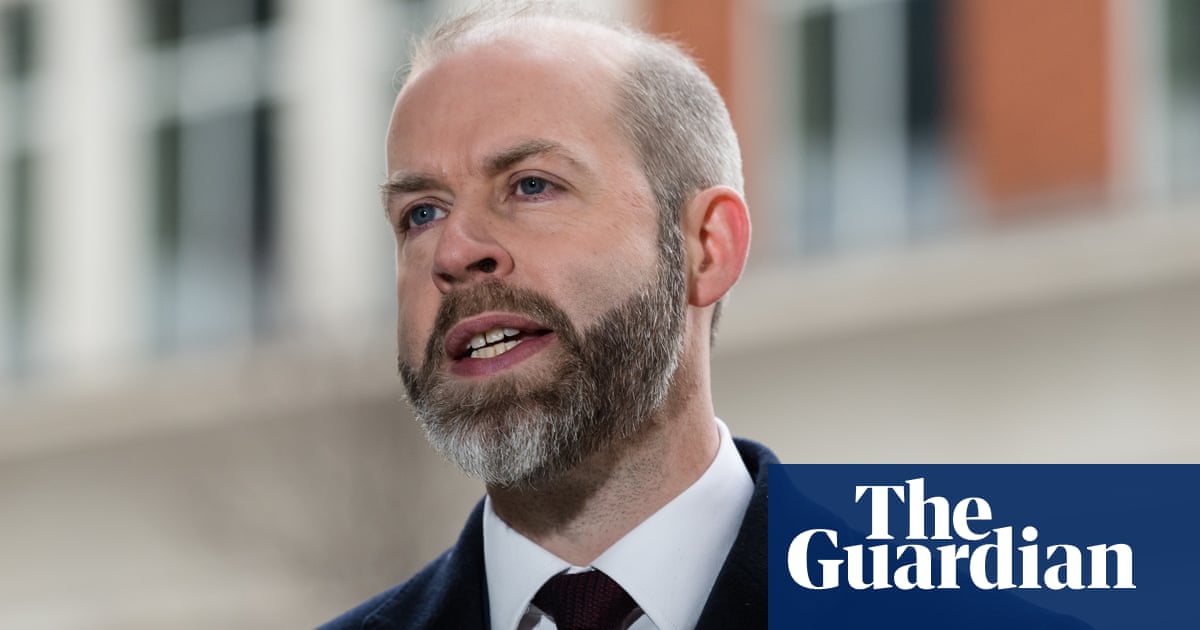Net migration down 20% in year ending June 2024, but still 728,000, ONS says
The Office for National Statistics has published its net migration figures, and it says there was a 20% fall in long-term net migration between the year ending June 2023 and the year ending June 2024.
But the figures are still very high – 728,000 in the year ending in June this year.
The ONS says:
Our latest estimates indicate a fall in long-term net migration (the difference between people coming to live in the UK and those leaving to live elsewhere). Our provisional estimates show a 20% reduction between our updated estimate for year ending (YE) June 2023 (906,000) and our latest estimate for YE June 2024 (728,000).
This fall is driven by a decline in long-term immigration mainly because of declining numbers of dependants arriving on study visas. Our most recent data points also show decreases in the number of people arriving for work-related reasons. This is consistent with visa data published by the Home Office, and in part reflects policy changes from earlier this year. It is also driven by a rise in long-term emigration, most notably for those who came to the UK on study-related visas. This is likely a consequence of the large number of students who came to the UK post-pandemic now reaching the end of their courses.
Key events 16m ago Number of cases in asylum backlog down 22%, says Home Office, but at 97,000 still higher than before 2022 42m ago Net migration in year ending June 2023 hit record high of 906,000, says ONS, as it revises up past figures 45m ago ONS revises up its estimate for net migration in year ending June 2023 by 166,000 53m ago Net migration down 20% in year ending June 2024, but still 728,000, ONS says 1h ago Use robots instead of hiring low-paid migrants, says shadow home secretary Chris Philp 1h ago David Cameron supports assisted dying bill due to ‘extremely strong’ safeguards 1h ago Tories say a drop in net migration figures would be due to their visa changes Show key events only Please turn on JavaScript to use this feature

Andrew Sparrow
The Conservative former home secretaries Suella Braverman and James Cleverly are claiming credit for net migration starting to fall.
Braverman posted this on social media.
A 20% drop in immigration since June 2023 is a result of the changes I fought for and introduced in May 2023 as Home Secretary.
That’s when we started to turn the tide.
But 1.2 million arrivals a year is still too high.
This is unsustainable and why we need radical change.
And Cleverly posted this.
Today’s migration figures are the first to show the impact of the changes that I brought in as Home Secretary.
Numbers are still too high, but we see the first significant downward trend in years. Changes that Labour opposed and haven’t fully implemented. pic.twitter.com/qG03N34zWg
Today’s migration figures are the first to show the impact of the changes that I brought in as Home Secretary.
Numbers are still too high, but we see the first significant downward trend in years. Changes that Labour opposed and haven’t fully implemented.
I am handing over the blog to colleagues now. I will be back later this morning.
Today’s Home Office figures show that the cost of government spending on asylum was £5.38bn in 2023-24, up 36% from £3.95bn in 2022-23, PA Media says.
Sunder Katwala, director of British Future, a thinktank focusing on migration, race and identity issues, says today’s figures should remind Keir Starmer of the danger of making promises he can’t keep. Katwala says:
These are the final scores of the last government, after more than a decade of making promises they could not keep on immigration. The collapse in public trust was one reason for their defeat in July. If Keir Starmer learns one lesson on immigration from his predecessors, it should be not to make promises you can’t keep.
Starmer will oversee a continuing fall from the record levels of net migration but his challenge now is to manage the trade-offs on migration for the economy, NHS, universities and social care.
It remains to be seen how much the public will notice a fall in visa numbers if there is no progress on controlling the much more visible Channel crossings.
Number of cases in asylum backlog down 22%, says Home Office, but at 97,000 still higher than before 2022
The Home Office has also published a raft of immigration and asylum figures this morning. There is a summary of the figures here, but you can find all the sets of data here.
The Home Office says the number of cases in the asylum backlog (applications waiting to be processed) is down by 22%. It says:
At the end of September 2024, there were 22% fewer asylum cases awaiting an initial decision (97,170 cases, relating to 133,408 people) than at the end of September 2023
While the number of cases awaiting an initial decision is lower than the peak at the end of June 2023 (134,046 cases), it is higher than before 2022.
This chart from the ONS report shows the impact of the changes to the visa rules announced at the end of last year on net migration numbers. Most foreign students were stopped from bringing dependants with them. And the rules for work visas were tightened too, with social care workers no longer allowed to bring dependants with them.

This is from Mary Gregory, director of population statistics at the Office for National Statistics, on today’s figures.
Since 2021, long-term international migration to the UK has been at unprecedented levels.
This has been driven by a variety of factors, including the war in Ukraine and the effects of the post-Brexit immigration system. Pent-up demand for study-related immigration because of travel restrictions during the coronavirus pandemic also had an impact.
While remaining high by historic standards, net migration is now beginning to fall and is provisionally down 20% in the 12 months to June 2024.
Over that period we have seen a fall in immigration, driven by declining numbers of dependants on study visas coming from outside the EU.
Over the first six months of 2024, we are also seeing decreases in the number of people arriving for work-related reasons. This is partly related to policy changes earlier this year and is consistent with visa data published by Home Office.
We are also starting to see increases in emigration, most notably for those who came to the UK on study-related visas. This is likely to be a consequence of the higher numbers of students coming to the UK post-pandemic who are now reaching the end of their courses.
Here is a chart from the ONS report illustrating the latest figures.

Net migration in year ending June 2023 hit record high of 906,000, says ONS, as it revises up past figures
Here is the PA Media story on the figures.
Net migration to the UK hit a higher than previously thought record of 906,000 in the year to June 2023, revised official estimates show.
The measure for the difference between the number of people arriving and leaving the country then dropped by 20% in the latest period, the 12 months to June 2024, and now stands at 728,000.
The total for the year to June 2023 has been revised upwards by 166,000 from the initial estimate of 740,000, according to Office for National Statistics (ONS) figures published on Thursday.
A similar change has been made to the estimate for net migration in the year to December 2023, which was initially estimated to be 685,000, and is now thought to be 866,000 – an increase of 181,000.
The ONS said that while remaining high by “historic standards”, net migration is now “beginning to fall”.
The revisions come as the ONS has continued to review its net migration figures as more complete data becomes available and has improved how it estimates the migration behaviour of people arriving in the UK from outside the European Union.
Better analysis of the number of people coming to the UK amid the conflict in Ukraine has also been taken into account.
ONS revises up its estimate for net migration in year ending June 2023 by 166,000
Although the headline ONS numbers show net migration falling, the benchmark has shifted. The ONS is today saying that net migration in the year ending June 2023 was 906,000. But that is 166,000 higher than the ONS’s original estimate for net migration in the year ending June 2023.
This is how the ONS explains the discrepancy in its report.
Estimates in this release have been updated back to YE June 2021. For example, net migration has been revised upwards by 166,000 for YE June 2023 and by 181,000 for YE December 2023. Reasons for these revisions include: more available data, more information on Ukraine visas and improvements to how we estimate migration of non-EU+ nationals.
Net migration down 20% in year ending June 2024, but still 728,000, ONS says
The Office for National Statistics has published its net migration figures, and it says there was a 20% fall in long-term net migration between the year ending June 2023 and the year ending June 2024.
But the figures are still very high – 728,000 in the year ending in June this year.
The ONS says:
Our latest estimates indicate a fall in long-term net migration (the difference between people coming to live in the UK and those leaving to live elsewhere). Our provisional estimates show a 20% reduction between our updated estimate for year ending (YE) June 2023 (906,000) and our latest estimate for YE June 2024 (728,000).
This fall is driven by a decline in long-term immigration mainly because of declining numbers of dependants arriving on study visas. Our most recent data points also show decreases in the number of people arriving for work-related reasons. This is consistent with visa data published by the Home Office, and in part reflects policy changes from earlier this year. It is also driven by a rise in long-term emigration, most notably for those who came to the UK on study-related visas. This is likely a consequence of the large number of students who came to the UK post-pandemic now reaching the end of their courses.
Use robots instead of hiring low-paid migrants, says shadow home secretary Chris Philp
Businesses should be using more robots instead of hiring low-paid migrants, Chris Philp, the shadow home secretary has said. Eleni Courea has the story.
During her interview round this morning, Seema Malhotra, the Home Office minister, said she would vote against the assisted dying bill tomorrow because she is “concerned about the challenges, the pressures that could be put on vulnerable people” if the law changes.
David Cameron supports assisted dying bill due to ‘extremely strong’ safeguards
David Cameron has said he has changed his mind on assisted dying and supports the bill to legalise it ahead of its first Commons vote this week, Eleni Courea reports.
This is from Tim Bale, the politics professor and expert on the modern Conservative party. He believes the “party in the media”, as he calls it (aka the Tory press) is an integral part of the Conservative political operation, and he says they like Kemi Badenoch’s immigration speech yesterday.
For a more critical take on the speech, it’s worth reading the FT commentator Stephen Bush on Bluesky. Here are some of his comments.
On Badenoch saying there has not been enough research into the costs and benefits of immigration
Putting to one side the non-trivial objection of ‘this is not true’. Yes, some of Sunak’s issues were ‘being an incumbent when inflation has spiked and the public services are on their knees’. But some were just being in this particular auction with Nigel Farage. Why will it work better for Kemi?
On the speech generally
Just as a matter of ‘actually being able to keep and make credible promises on immigration’, it is bonkers to start your leadership’s Big Political Rethinking with immigration, because you need to have a sense of how many people you actually think you *need* to keep public services running first.
Reducing immigration is a spending commitment, ultimately.
On Badenoch promising to cap net migration numbers.
A bold approach to return to the promise that destroyed a century-long advantage over Labour on immigration.
Government figures reckon the latest annual net migration figure will be around 500,000, Sam Blewett says in his London Playbook briefing for Politico.
Government officials and the Tories both reckon the ballpark provisional figure will be somewhere around 500,000, well down from that record high of 745,000 in 2022. There will be those who argue the latest figure is massive pretty much whatever it is — but if Starmer is serious about bringing down the numbers, he can thank a suite of measures that would have been much more unpalatable for a left-leaning party to have introduced.
The last big set of migration figures came out in May, and they showed long-term net migration at 685,000 in the year ending December 2023. Figures out this time last year showed net migration at 745,000 in the year to December 2022
Tories say a drop in net migration figures would be due to their visa changes
Good morning. The latest immigration figures are out this morning, but the political debate about them has already started. They are expected to show net migration figures falling, and the Conservatives say that is because of decisions they took before the general election. They are referring to the sweeping changes to visa rules announced by James Cleverly in December last year. Kemi Badenoch deployed this line at the start of her speech on immigration yesterday, saying:
Tomorrow, immigration figures will be released that should show a drop in net migration. This is because of the changes we made in the last year of the Conservative government.
But she said she did not expect the numbers to fall by enough.
The figures we saw for 2023 were astonishing. They highlighted a big problem we must be honest about. Even if we see a decline in tomorrow’s data, the fact is immigration, both legal and illegal, is too high.
Chris Philp, the shadow home secretary, has been giving interviews this morning saying much the same thing. Seema Malhotra, the Home Office minister, has been putting the counter case on behalf of the government. She told BBC Breakfast this morning that the government wants to see net migration fall, but she would not say by how much. She also said it was important to tackle the causes of high migration.
We want to see net migration coming down, but we have to do so in a way that is tackling the causes of net migration, because if much of net migration has been driven by recruiting workers from overseas, you also have to look at what the impact on the economy would be.
Here is the agenda for the day.
9.30am: Immigration figures publishing the period up to June 2024 are published by the Office for National Statistics. The Home Office is also publishing its latest figures relating to asylum applications.
9.30am: Lisa Nandy, the culture secretary, takes questions in the Commons.
11.30am: Downing Street holds a lobby briefing.
11.30am: Nigel Farage, the Reform UK leader, is holding a press conference with the four other Reform UK MPs and the party chair, Zia Yusuf.
If you want to contact me, please post a message below the line or message me on social media. I can’t read all the messages BTL, but if you put “Andrew” in a message aimed at me, I am more likely to see it because I search for posts containing that word.
If you want to flag something up urgently, it is best to use social media. You can reach me on Bluesky at @andrewsparrowgdn. The Guardian has given up posting from its official accounts on X but individual Guardian journalists are there, I have still have my account, and if you message me there at @AndrewSparrow, I will see it and respond if necessary.
I find it very helpful when readers point out mistakes, even minor typos. No error is too small to correct. And I find your questions very interesting too. I can’t promise to reply to them all, but I will try to reply to as many as I can, either BTL or sometimes in the blog.

 2 months ago
53
2 months ago
53













































